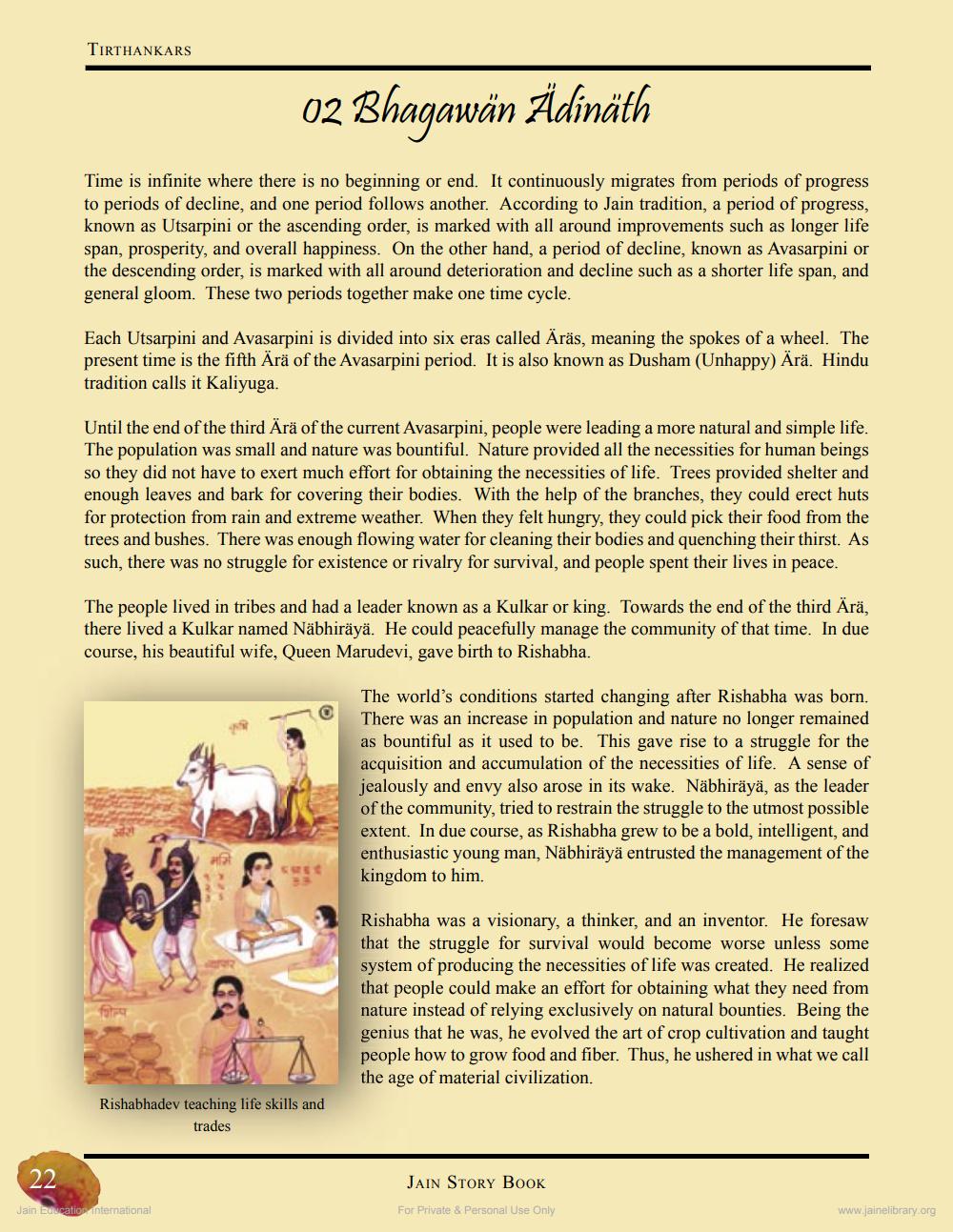________________
TIRTHANKARS
02 Bhagawan Ädinäth
Time is infinite where there is no beginning or end. It continuously migrates from periods of progress to periods of decline, and one period follows another. According to Jain tradition, a period of progress, known as Utsarpini or the ascending order, is marked with all around improvements such as longer life span, prosperity, and overall happiness. On the other hand, a period of decline, known as Avasarpini or the descending order, is marked with all around deterioration and decline such as a shorter life span, and general gloom. These two periods together make one time cycle.
Each Utsarpini and Avasarpini is divided into six eras called Äräs, meaning the spokes of a wheel. The present time is the fifth Ärä of the Avasarpini period. It is also known as Dusham (Unhappy) Ärä. Hindu tradition calls it Kaliyuga.
Until the end of the third Ärä of the current Avasarpini, people were leading a more natural and simple life. The population was small and nature was bountiful. Nature provided all the necessities for human beings so they did not have to exert much effort for obtaining the necessities of life. Trees provided shelter and enough leaves and bark for covering their bodies. With the help of the branches, they could erect huts for protection from rain and extreme weather. When they felt hungry, they could pick their food from the trees and bushes. There was enough flowing water for cleaning their bodies and quenching their thirst. As such, there was no struggle for existence or rivalry for survival, and people spent their lives in peace.
The people lived in tribes and had a leader known as a Kulkar or king. Towards the end of the third Ärä, there lived a Kulkar named Näbhiräyä. He could peacefully manage the community of that time. In due course, his beautiful wife, Queen Marudevi, gave birth to Rishabha.
The world's conditions started changing after Rishabha was born. There was an increase in population and nature no longer remained as bountiful as it used to be. This gave rise to a struggle for the acquisition and accumulation of the necessities of life. A sense of jealously and envy also arose in its wake. Näbhiräyä, as the leader of the community, tried to restrain the struggle to the utmost possible extent. In due course, as Rishabha grew to be a bold, intelligent, and enthusiastic young man, Näbhiräyä entrusted the management of the kingdom to him.
Rishabha was a visionary, a thinker, and an inventor. He foresaw that the struggle for survival would become worse unless some system of producing the necessities of life was created. He realized that people could make an effort for obtaining what they need from nature instead of relying exclusively on natural bounties. Being the genius that he was, he evolved the art of crop cultivation and taught people how to grow food and fiber. Thus, he ushered in what we call the age of material civilization.
Rishabhadev teaching life skills and
trades
22
JAIN STORY BOOK For Private & Personal Use Only
Jain Education international
www.jainelibrary.org




